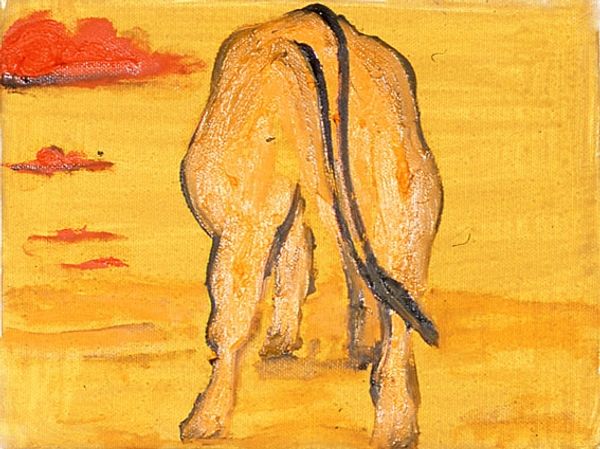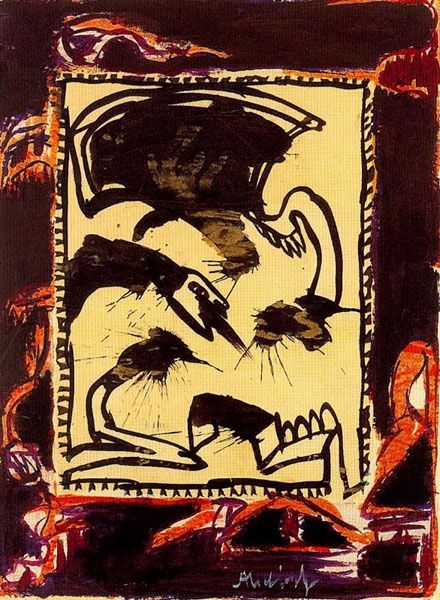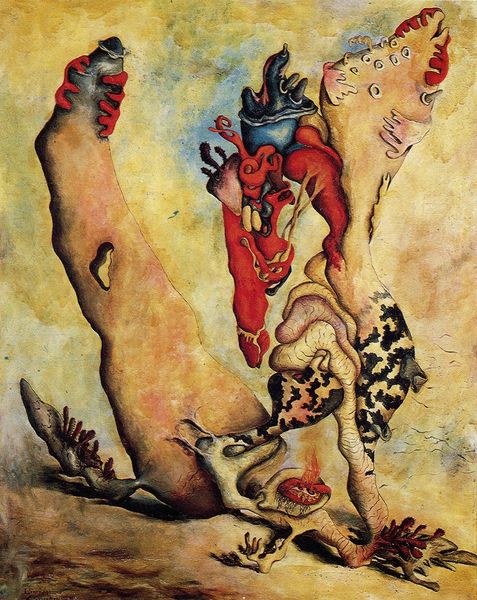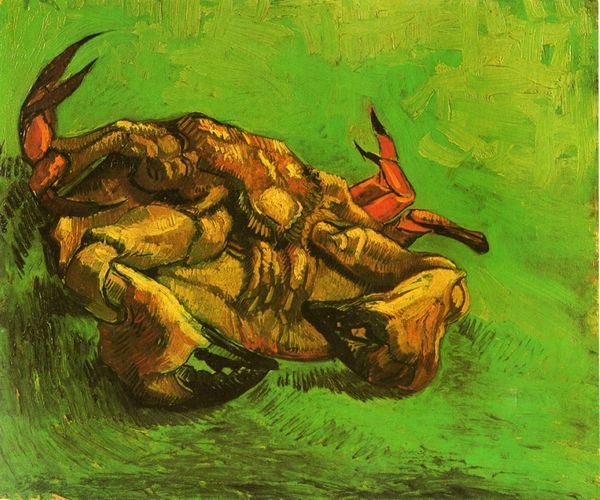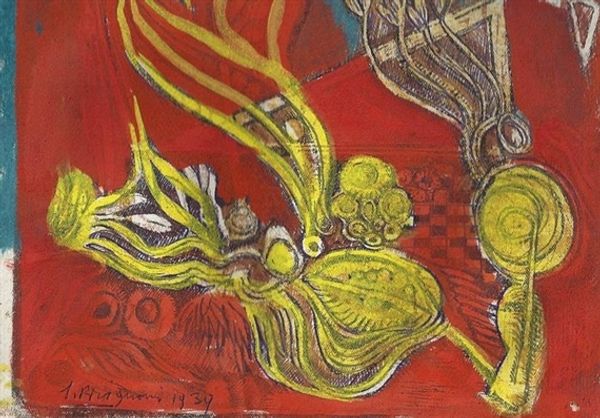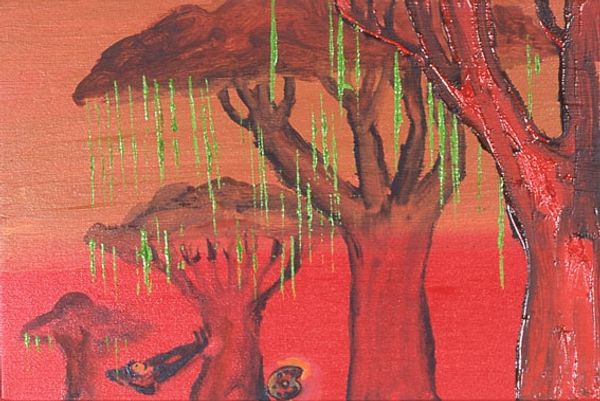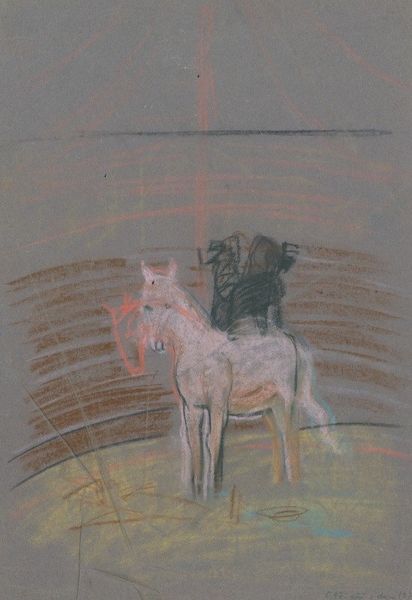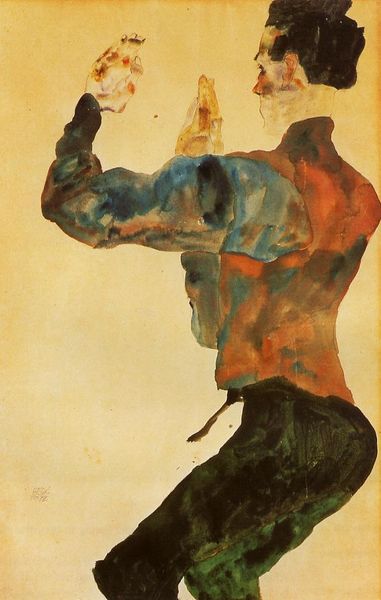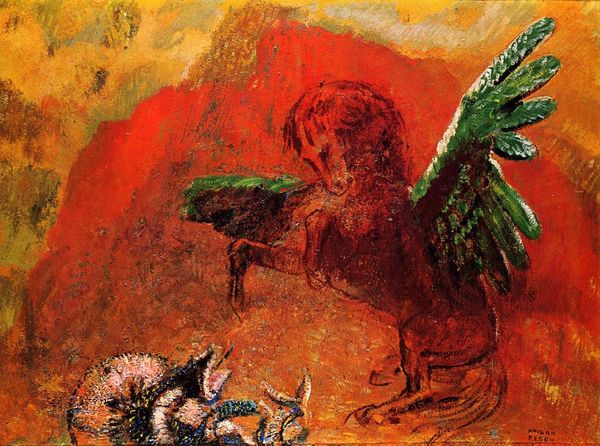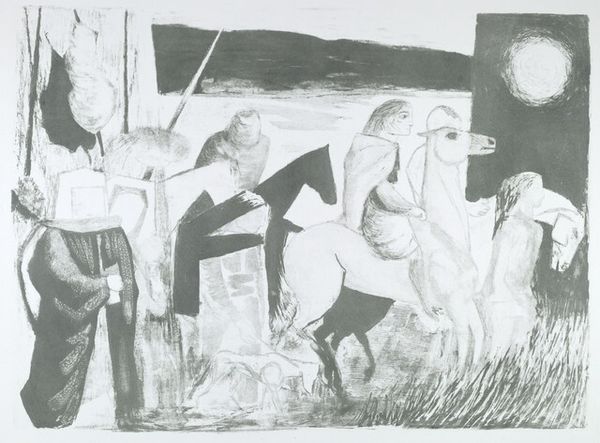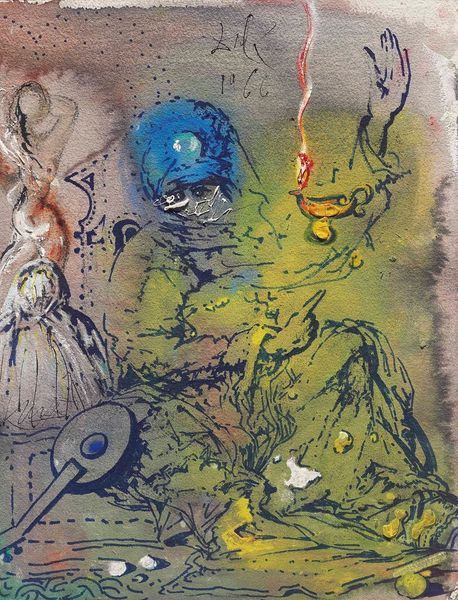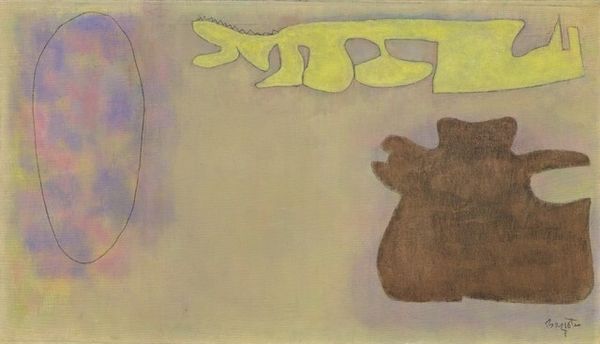
painting, acrylic-paint
#
contemporary
#
painting
#
landscape
#
acrylic-paint
#
figuration
#
acrylic on canvas
#
painting art
#
italian-renaissance
Dimensions: 20 x 29.5 cm
Copyright: Enzo Cucchi,Fair Use
Curator: Let's discuss Enzo Cucchi's 2007 painting, "Carne e vestito." It’s an acrylic on canvas piece, characteristic of his contemporary style. What strikes you initially about it? Editor: The ochre tones create an oppressive heat, and then that awkward goat...it seems so isolated, a bit monstrous. You immediately fixate on its materiality. I imagine the quick layering of paint, almost a sculptural impulse. Curator: Cucchi often worked with archetypes and primal imagery. That goat, for example, may allude to sacrificial themes or a bestial aspect of human nature. The light almost feels biblical. Editor: Interesting point about sacrifice, but look at how Cucchi handles the paint. The crudeness almost mocks the elevated themes you propose. It is materially grounded in a certain deliberate roughness. Note the flat, almost careless background. Curator: But isn't that roughness part of its power? He is pulling at these very old symbolic structures. See that human figure at the bottom left. Is it placing offerings near what appears to be an old trunk? This is clearly tied to the theme. Editor: Or, think about labor! He could just be stacking tiles for a roof, or maybe some other more mundane task! I appreciate that it resists a single symbolic resolution. Cucchi is toying with us here. The cheap material also helps me to reconsider the high art implications. What is precious in that material world and why? Curator: Maybe it is both, isn’t it always both? The quotidian elevates through the sheer power of primal symbolism. The piece acts as an offering of the everyday to something beyond, mediated through this, let’s say ‘crude,’ yet impactful handling of paint. Editor: I suppose. By grappling with the raw materiality and technique, and by questioning conventional modes, it is undeniable that one gains insights. This piece forces me to question hierarchies of value and production. Curator: And I think examining how that beast becomes symbolic helps us unpack complex and, yes, often uncomfortable aspects of being. It uses these forms to get at something deep in our subconscious. Editor: A fascinating exercise in the friction between the earthly and the allegorical.
Comments
No comments
Be the first to comment and join the conversation on the ultimate creative platform.
